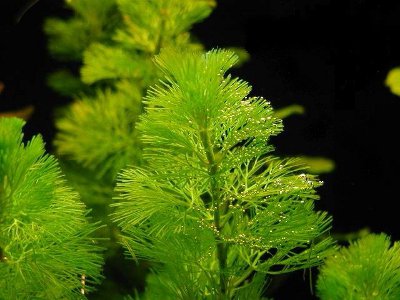Camomba Plant
Category: Pond Plants

Facts about Cabomba plant. "Scientific name for Cabomba plant is Cabomba caroliniana". Cabomba is a submerged aquatic plant genus. All the species under it have submerged leaves arranged like the blades of a fan. Hence, it is also known as fanwort. This is used in the aquariums for its water oxygenating characteristic and ornamental appearance. It looks quite eye catchy when placed in a corner of the aquarium with a high beam focused on it. Its use in aquarium led its way to all over the world, but when it came into Australia, their growth was outnumbered and they were declared as “pestilential weedsâ€.
In aquariums the proper Water Conditions for Cabomba plants are 6.5 to 7.5 pH and soft to moderately hard. The average temperature should be between 72 to 82 °F (22-28 °C)and the maximum size of the Cabomba plant is 20 Inches (51 cm). Cabomba plant also need lighting requirements are medium.
Few Fast Fact about Cabomba plants
#1
Cabomba plant has been identified with the immense ability to spread through Australian aquatic habitat and there is no practical and effective method to control it once it is established in an aquatic system.
#2
Mechanical harvesters and herbicides are used to control it, but full control hasn’t been achieved yet. An overgrown Cabomba plant in water reservoirs affects the aquatic environment, water quality and recreational activities.
#3
A piece of Cabomba plant is enough for spreading. It survives in water for many weeks and starts growing when feasible nutrients are available.
Habitat of Cabomba plants
Cabomba plant can grow in still and slow moving water bodies, especially where the nutrient content is high. It is often found along the shores of lakes and ponds. The ideal water depth for them for fastest growth is no less than three metres.
Appearance of Cabomba plants
They can be identified by their fan like leaf distribution. The flowers are small with white petals and yellow centers. During the summer, the Cabomba plant flower containing stems extend above the water level for weed infestations.
It is illegal to cultivate, move or sell Cabomba plants in Australia. Due to its tolerance of fragmentation and ease for growth, the plant spreads across drainages, boat trailers and blocks them. The endangered Mary River cod, found in Southern Queensland is also suspected to be negatively affected by cabomba.

 Back To Category Pond Plants
Back To Category Pond Plants